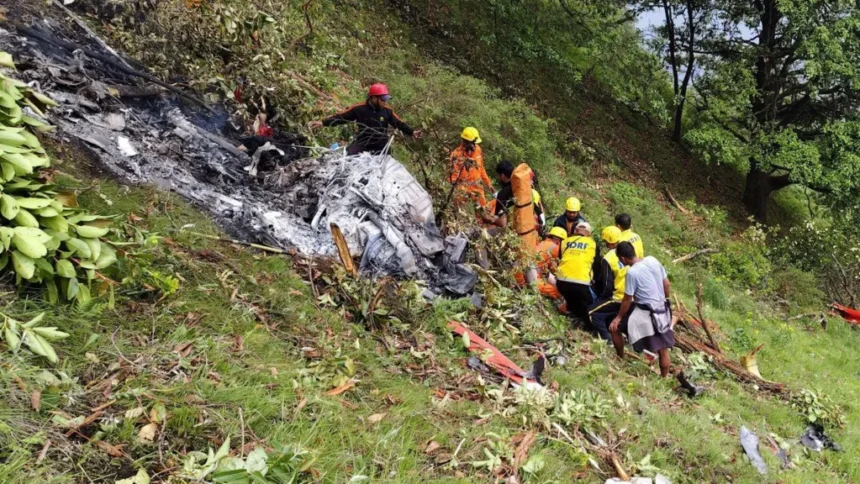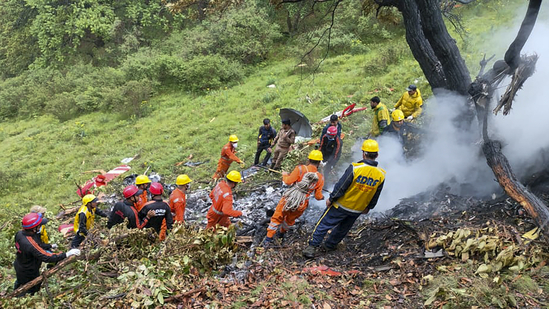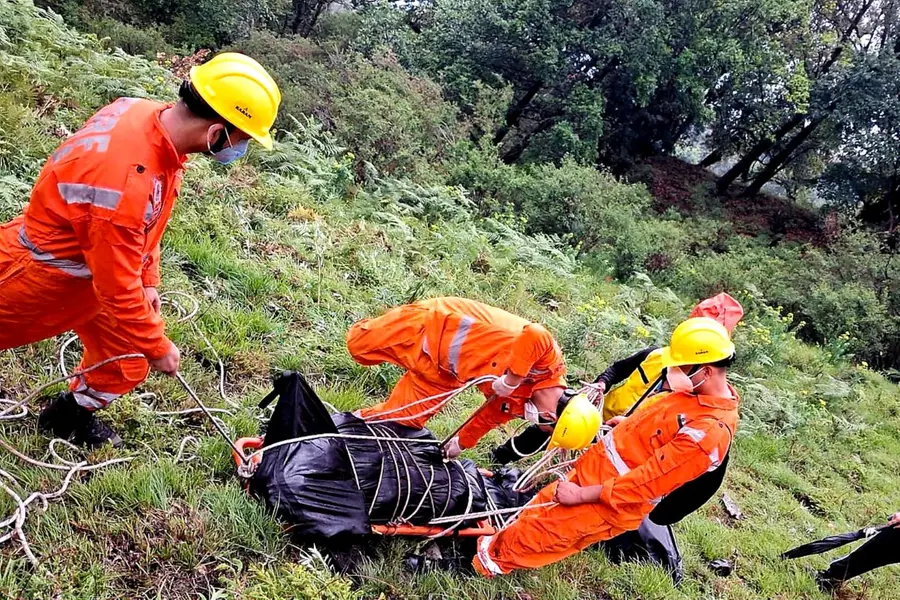NEW DELHI – Seven people, including a two-year-old and the pilot, died in a helicopter crash in Uttarakhand, India, raising fresh concerns about flight safety in the state’s mountainous regions. The accident happened early on Sunday, when an Aryan Aviation Bell 407 helicopter went down in the forests of Gaurikund, not far from the famous Kedarnath temple.
The helicopter was flying pilgrims from Kedarnath to Guptkashi, a journey of about ten minutes, when it crashed shortly after takeoff at 05:19 local time. Investigators suspect poor visibility and bad weather played a role, while the Aircraft Accident Investigation Bureau is looking into the full cause.
Among the victims were five pilgrims from Uttar Pradesh, Maharashtra, and Gujarat, who were making the Char Dham pilgrimage. This route draws thousands every year, taking worshippers to four major Himalayan temples. The crash site, between Gaurikund and Trijuginarayan, caught fire and left the bodies severely burned, officials said.
Rescue teams from the State Disaster Response Force, National Disaster Response Force, and local police reached the area quickly, even though the forested terrain is tough to access. Uttarakhand’s Chief Minister Pushkar Singh Dhami offered condolences and stopped all helicopter trips on the Kedarnath route until Monday while authorities review pilot training and safety steps.
According to the BBC, this incident is the fifth air accident in Uttarakhand in just six weeks, bringing renewed scrutiny to helicopter services for pilgrims in these remote mountains. Bansidhar Tripathi, the state’s director-general of information, said there have been three emergency landings and two crashes on the Char Dham route in the past month and a half.
Earlier, on 8 May 2025, a helicopter crash near Uttarkashi killed six people, including five women tourists. On 7 June, another helicopter made an emergency landing due to a technical problem, injuring the pilot but not the passengers. These examples show how risky it is to fly in high-altitude areas where the weather can shift without warning.
Helicopter crashes are not new to India, especially in areas with rough terrain. In October 2022, another deadly crash near Kedarnath took seven lives. Back in 2011, 17 tourists died in Arunachal Pradesh when a Pawan Hans Mi-17 helicopter fell into a gorge near Tawang.
Perhaps the most high-profile crash happened on 8 December 2021, when a military helicopter went down in Tamil Nadu, killing 13 people, including India’s Chief of Defence Staff General Bipin Rawat. Investigators blamed pilot error and a lack of situational awareness for that tragedy. These repeated incidents have led many to call for tighter rules and better safety checks.
Uttarakhand’s government has promised a strong response. Chief Minister Dhami said a special committee, already set up to study previous crashes, will look into this one too and check for any gaps in safety measures. He announced stricter rules for helicopter operations, including thorough technical checks, weather monitoring, and making sure pilots have enough experience flying in the Himalayas.
Plans for a new command and coordination centre in Dehradun are also underway to improve safety. The Directorate General of Civil Aviation has already suspended two operators for breaking rules and has increased oversight since the crash.
The Kedarnath route, part of the Char Dham Yatra, brings thousands of pilgrims who often prefer helicopters to avoid long treks. With more companies offering charter flights, demand is high, but unpredictable weather and high altitudes still pose major risks.
As the investigation continues, this latest disaster is a clear warning that stronger safety measures are needed to protect both passengers and staff in these challenging regions.
















